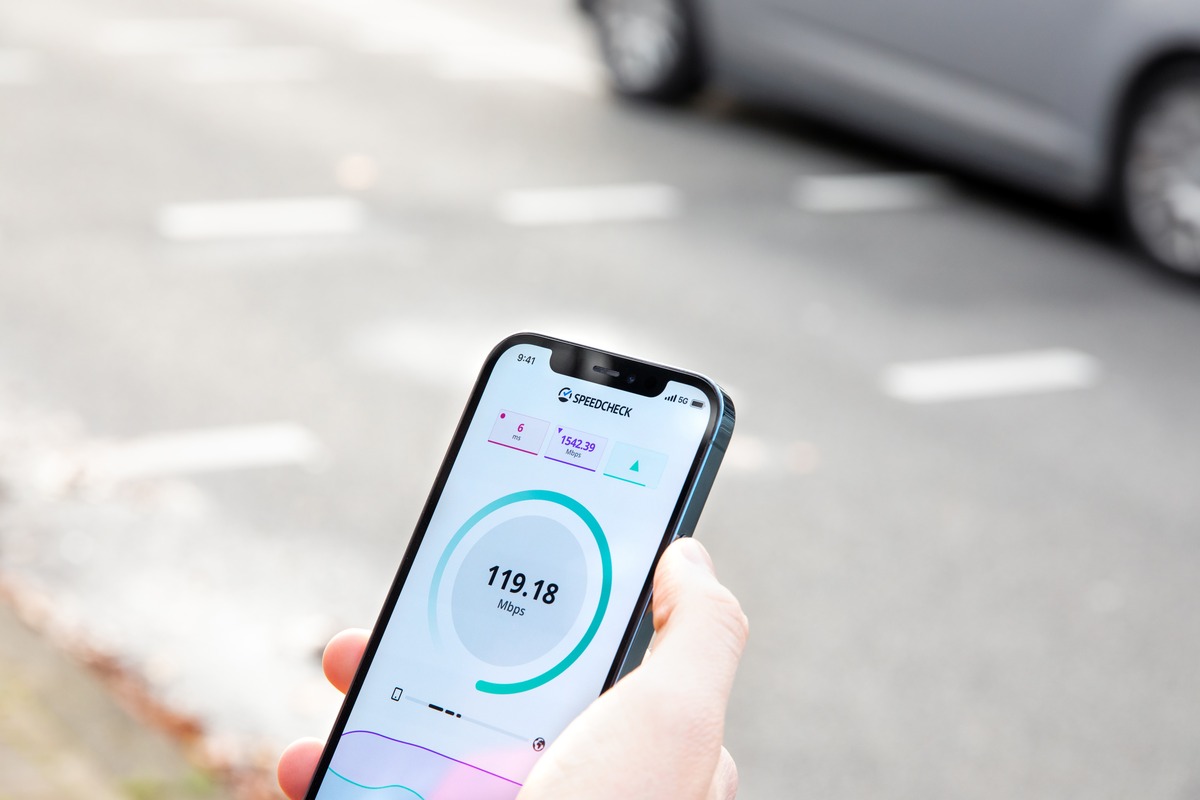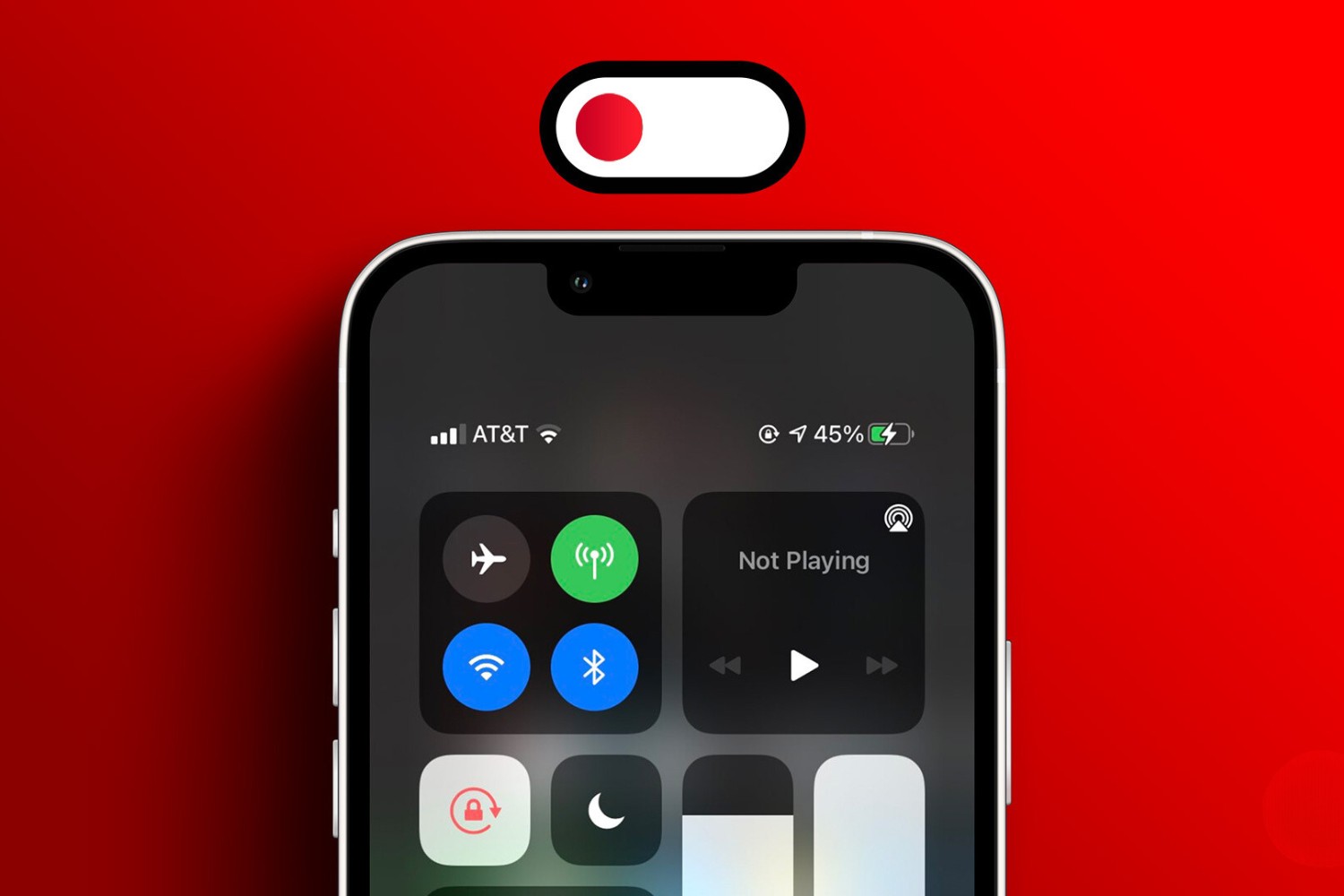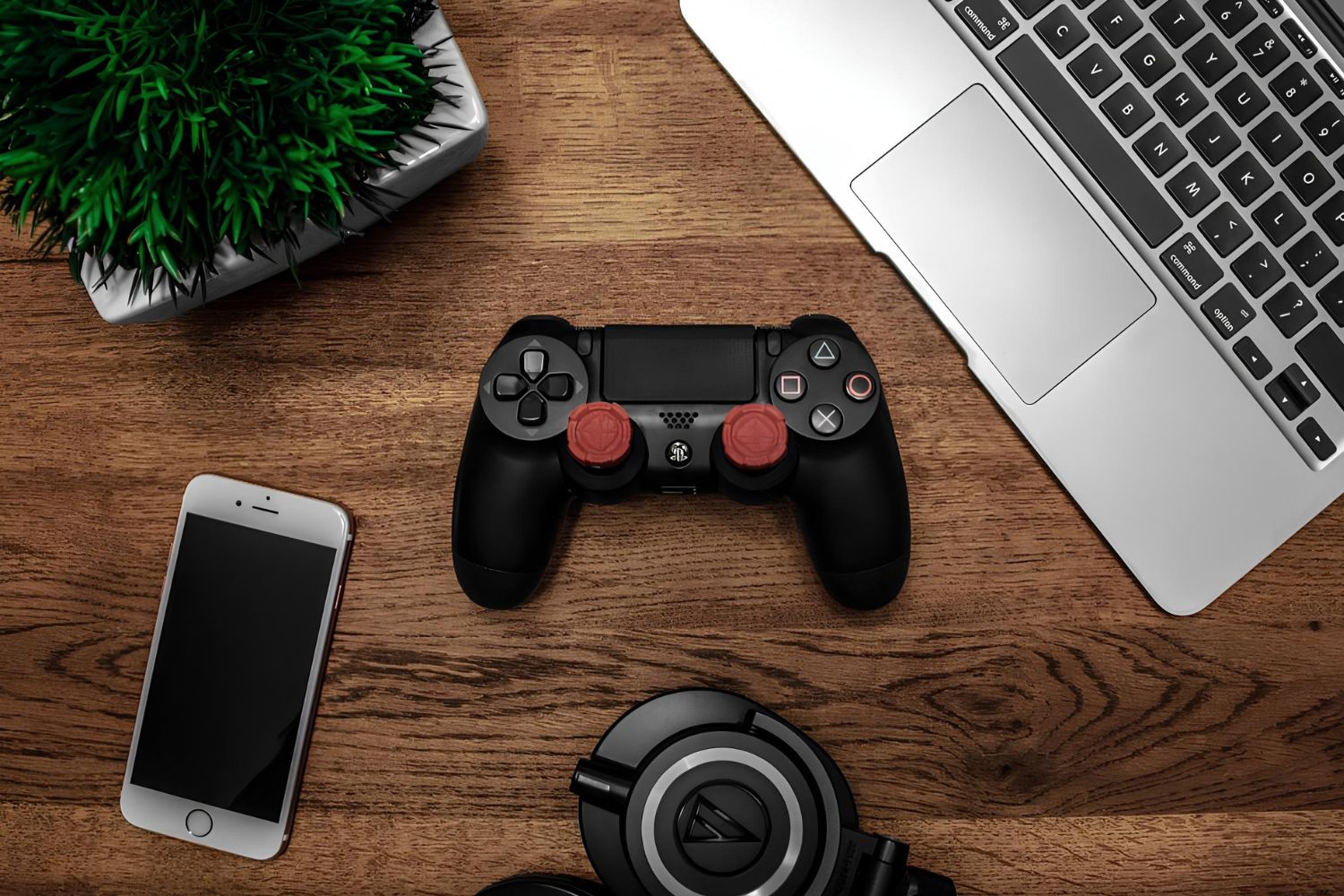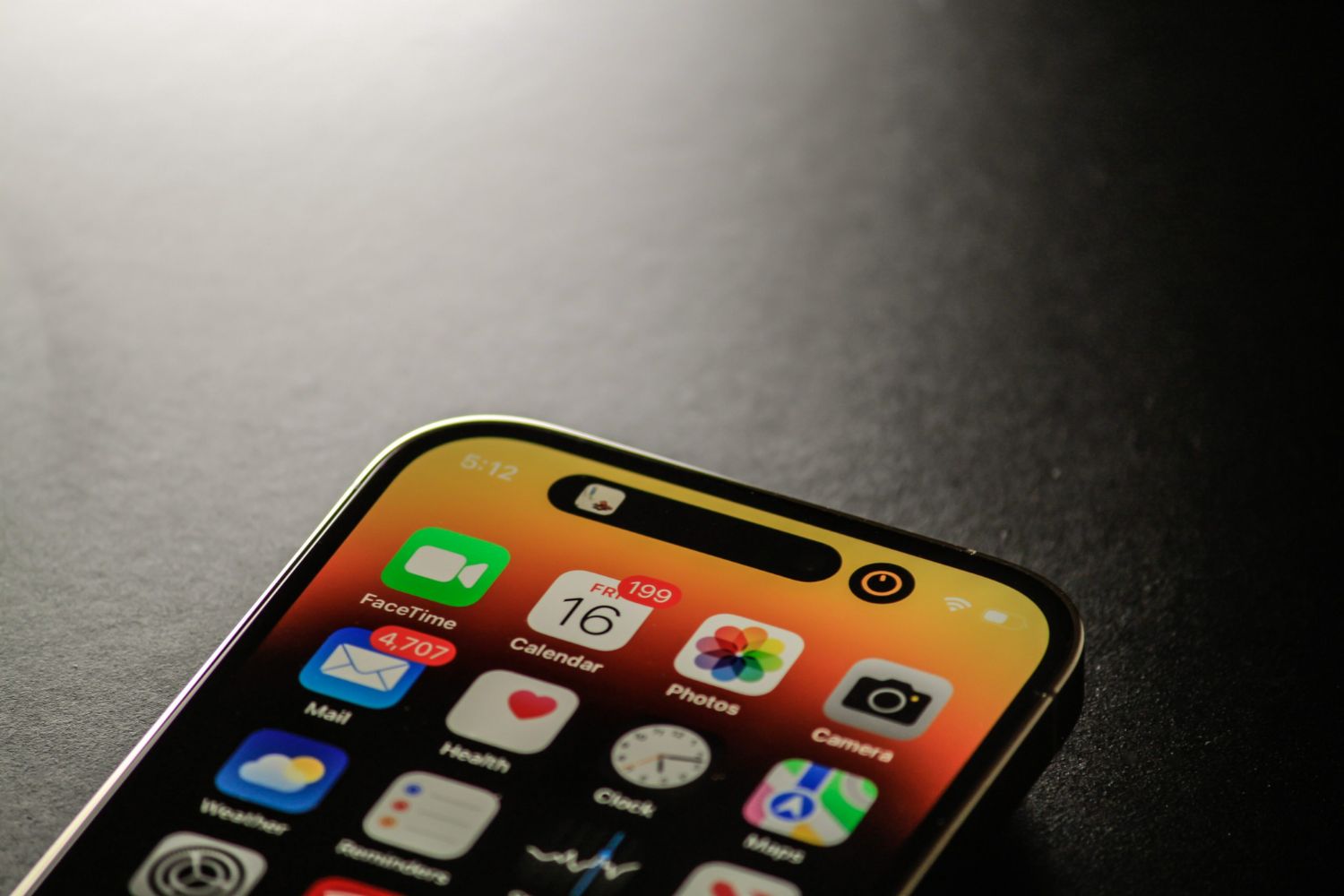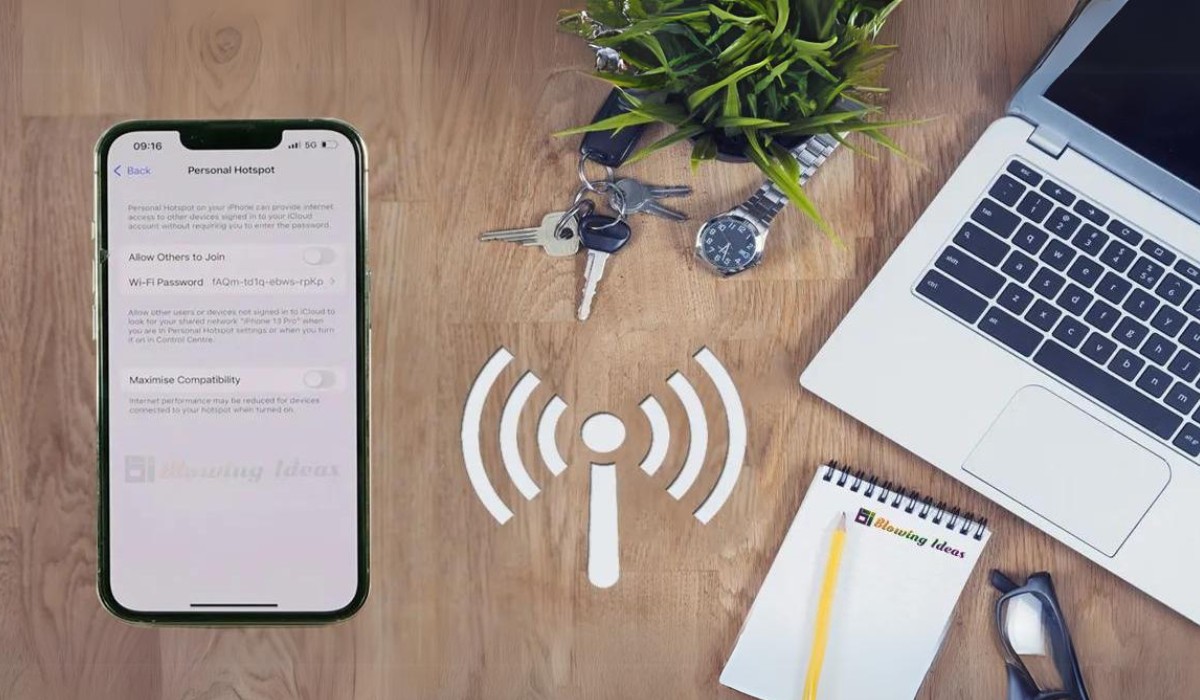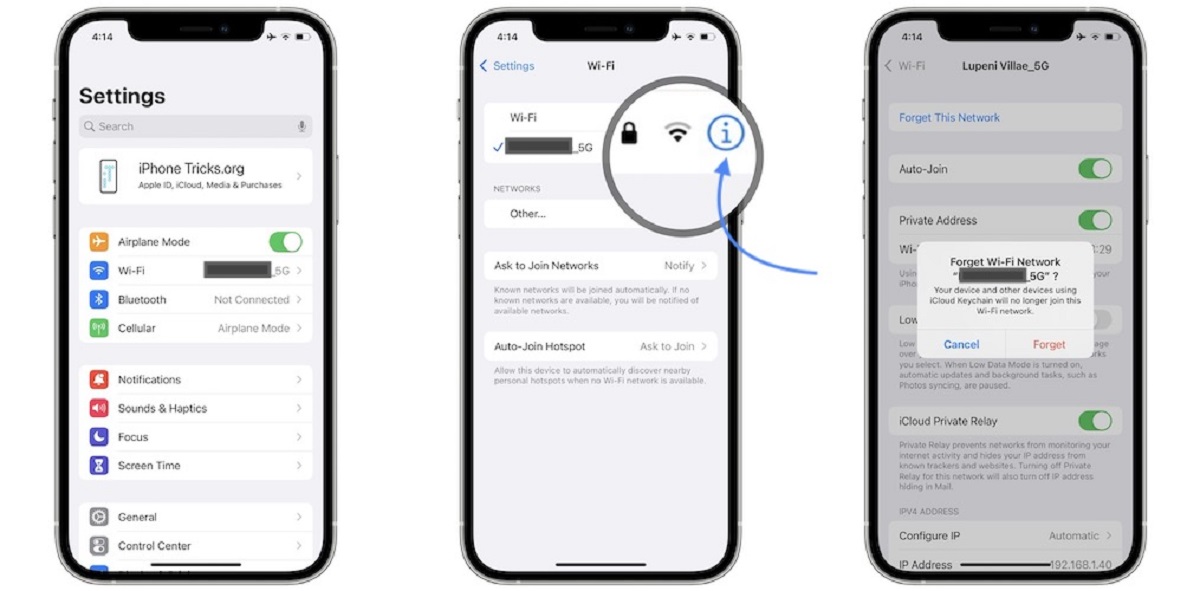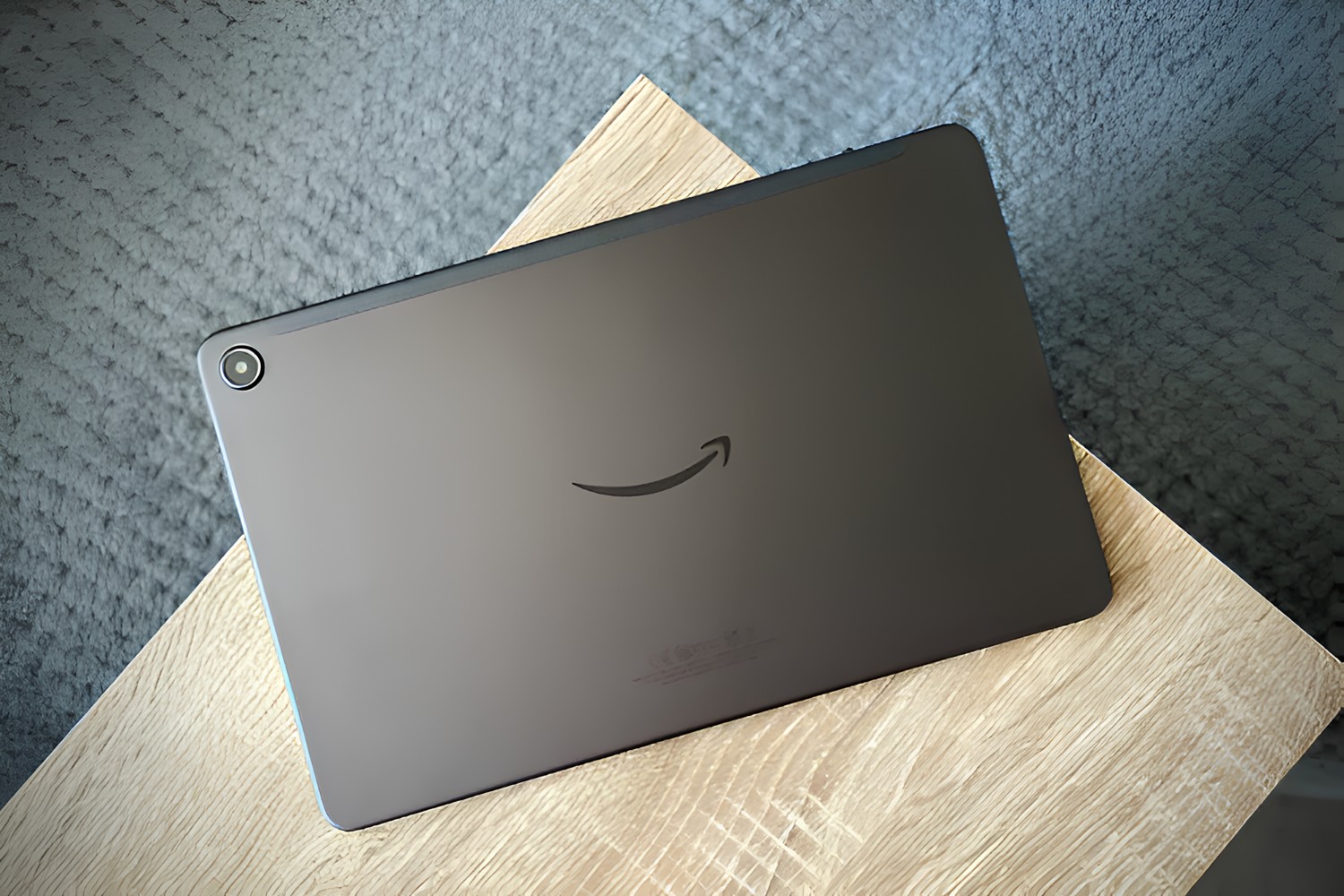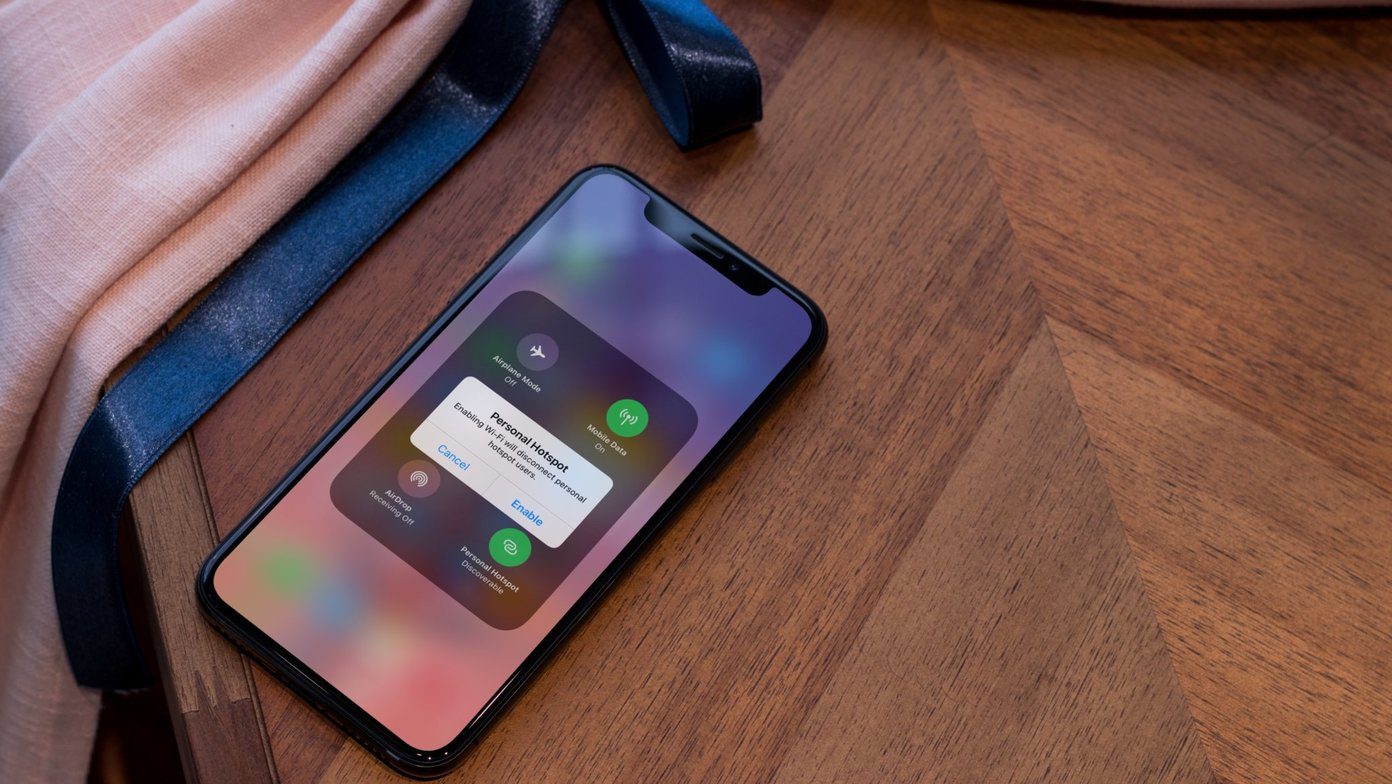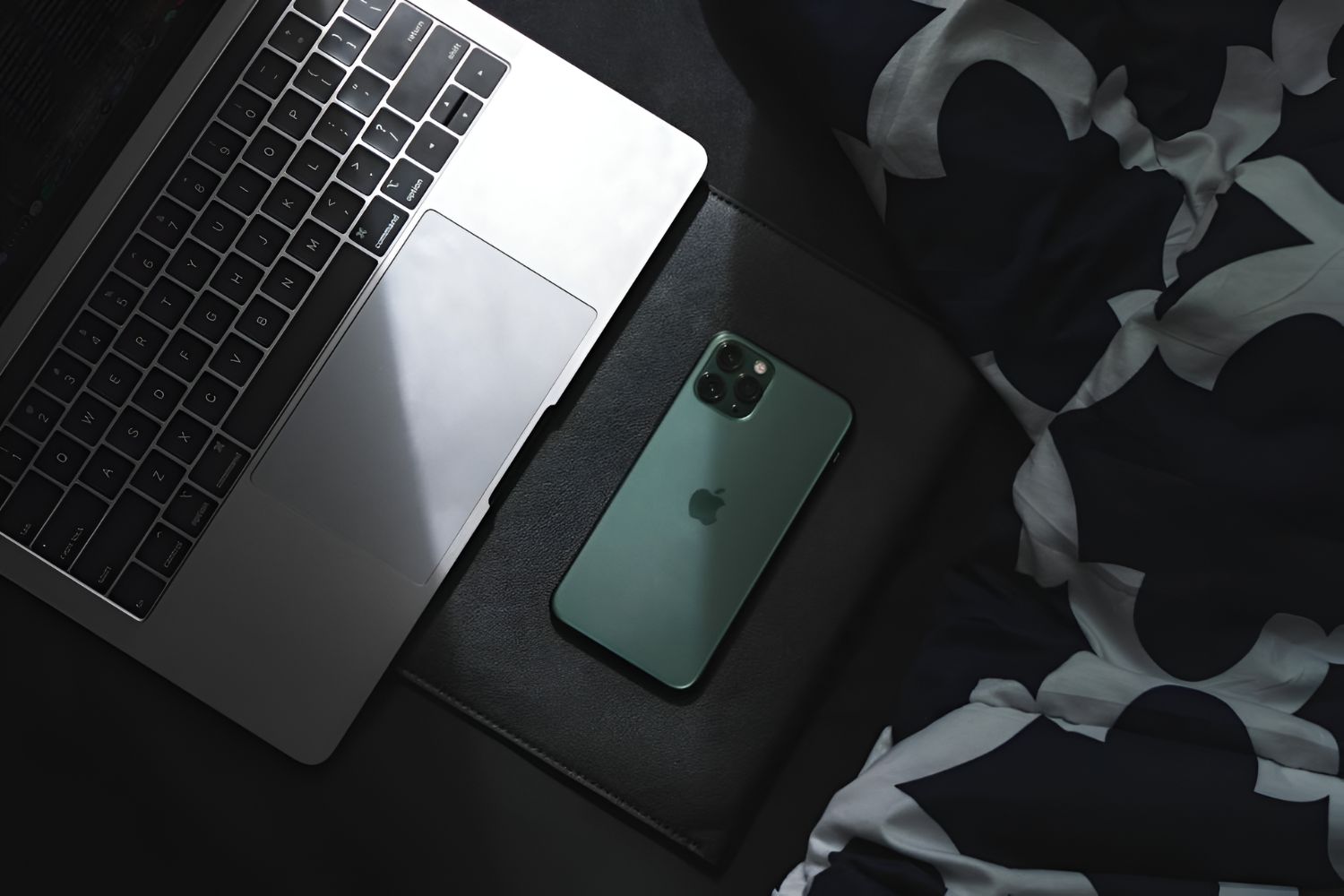Check for Carrier Settings Update
One of the initial steps to enhance the speed and performance of your iPhone's hotspot is to ensure that your device has the latest carrier settings. These settings play a crucial role in optimizing the connection between your iPhone and your carrier's network, thereby influencing the performance of the hotspot feature.
To check for a carrier settings update, follow these simple steps:
-
Access the Settings Menu: Open the "Settings" app on your iPhone.
-
Select General: Scroll down and tap on "General."
-
Choose About: Tap on "About" to access information about your device.
-
Check for Update: If there's an available carrier settings update, a prompt will appear, allowing you to download and install the update.
It's important to note that carrier settings updates are released by your mobile network provider to improve network connectivity, address network-related issues, and optimize the performance of various features, including the personal hotspot functionality.
By ensuring that your iPhone is running on the latest carrier settings, you can potentially resolve compatibility issues, improve network stability, and enhance the overall speed and reliability of your hotspot connection. This proactive approach can significantly impact your browsing experience, especially when using the hotspot feature to connect other devices to the internet.
Regularly checking for carrier settings updates and promptly installing them can contribute to a smoother and more efficient hotspot experience, empowering you to make the most of your iPhone's connectivity capabilities.
By staying proactive and keeping your device updated with the latest carrier settings, you can maximize the potential of your iPhone's hotspot feature, ensuring that it delivers a fast and reliable internet connection for all your connected devices.
Restart Your iPhone
Restarting your iPhone is a simple yet effective troubleshooting step that can help improve the performance of your device's hotspot. When your iPhone is in use for an extended period, various processes and background tasks may accumulate, potentially leading to performance issues, including a slowdown in hotspot speed. Restarting your iPhone can address these issues by clearing temporary data, refreshing system processes, and resolving minor software glitches that may be impacting the hotspot functionality.
To restart your iPhone, follow these steps:
- Press and hold the power button (also known as the side button or sleep/wake button) located on the right side of your device.
- Simultaneously, press and hold either the volume up or volume down button until the "slide to power off" slider appears on the screen.
- Drag the slider to turn off your iPhone.
- After your iPhone powers off completely, press and hold the power button again until the Apple logo appears, indicating that your device is restarting.
Upon restarting, your iPhone will undergo a fresh boot cycle, allowing it to reinitialize system processes and clear temporary data. This can potentially lead to improved hotspot performance, as any underlying software issues that may have been affecting the hotspot functionality are addressed.
Restarting your iPhone is a quick and non-intrusive step that can be performed anytime you experience issues with your device's hotspot speed or connectivity. It serves as a simple yet effective method to troubleshoot and refresh your device, potentially leading to noticeable improvements in hotspot performance.
In addition to addressing hotspot-related issues, restarting your iPhone can also contribute to overall device optimization, ensuring that it operates smoothly and efficiently across various functions and features. By incorporating regular restarts into your device maintenance routine, you can help maintain the optimal performance of your iPhone's hotspot and other essential functionalities.
By restarting your iPhone as part of your troubleshooting approach, you can proactively address potential performance issues and ensure that your device's hotspot delivers a fast and reliable internet connection for all your connected devices.
Update iOS Software
Updating the iOS software on your iPhone is a fundamental step in optimizing the performance of your device's hotspot. Apple regularly releases iOS updates, each containing a range of enhancements, bug fixes, and optimizations designed to improve the overall functionality and stability of iOS devices, including the hotspot feature. By ensuring that your iPhone is running the latest version of iOS, you can leverage the benefits of performance improvements and bug fixes that directly impact the hotspot's speed and reliability.
To update the iOS software on your iPhone, follow these straightforward steps:
-
Access the Settings Menu: Begin by opening the "Settings" app on your iPhone. The Settings app is represented by a gear icon and serves as the central hub for configuring various aspects of your device.
-
Select General: Scroll through the options and tap on "General." This section encompasses a wide range of device management and configuration settings, including software updates and system-related preferences.
-
Choose Software Update: Within the General settings, locate and tap on "Software Update." This initiates a check for available iOS updates for your device.
-
Download and Install: If an iOS update is available, you will be presented with the option to download and install it. Ensure that your iPhone is connected to a stable Wi-Fi network and has sufficient battery life or is connected to a power source to facilitate the update process.
-
Follow On-Screen Instructions: Proceed with the download and installation process as guided by the on-screen instructions. This typically involves confirming the update and allowing your device to restart to complete the installation.
Updating the iOS software brings a multitude of benefits to your iPhone's hotspot functionality. These updates often include optimizations aimed at enhancing network connectivity, improving data transfer efficiency, and addressing potential software-related limitations that may impact the hotspot's speed and performance. By staying up to date with iOS updates, you can take advantage of these refinements to ensure that your hotspot operates at its best.
Furthermore, iOS updates frequently introduce security patches and privacy enhancements, fortifying the overall integrity of your device and its network-related features. By maintaining a current iOS version, you can mitigate potential vulnerabilities and ensure a secure and reliable hotspot experience for both your iPhone and the devices connected to it.
In essence, updating the iOS software on your iPhone is a proactive measure that directly contributes to the optimization of your device's hotspot. By embracing the latest iOS updates, you can harness performance improvements, security enhancements, and network optimizations, ultimately ensuring that your iPhone's hotspot delivers a fast, stable, and secure internet connection for all your connected devices.
Reset Network Settings
Resetting the network settings on your iPhone can serve as a potent troubleshooting strategy to address a wide array of connectivity issues, including those affecting the performance of your device's hotspot. This process essentially clears all network-related configurations and preferences on your iPhone, reverting them to their default state. By doing so, you can effectively eliminate potential network-related inconsistencies, software conflicts, or misconfigurations that may be impeding the optimal functionality of your hotspot.
To initiate the process of resetting network settings, follow the steps outlined below:
-
Access the Settings Menu: Begin by launching the "Settings" app on your iPhone. This essential application serves as the central hub for configuring various aspects of your device, including network settings.
-
Select General: Scroll through the available options and tap on "General." This section encompasses a wide range of device management and configuration settings, including the network-related preferences that will be reset.
-
Choose Reset: Within the General settings, locate and tap on "Reset." This section houses various reset options that allow you to restore different aspects of your device to their default configurations.
-
Reset Network Settings: Among the reset options, select "Reset Network Settings." You may be prompted to enter your device's passcode to confirm the action. Once confirmed, your iPhone will proceed to reset all network settings.
Upon resetting the network settings, your iPhone will clear saved Wi-Fi networks, Bluetooth devices, VPN configurations, and cellular settings. It's important to note that this process does not delete any personal data or media from your device. Instead, it focuses solely on network-related configurations and preferences.
By resetting the network settings, you effectively initiate a clean slate for your device's network connectivity. This can help resolve a myriad of connectivity issues, including slow hotspot performance, intermittent connection drops, and difficulty in establishing stable connections with other devices. Additionally, this process can rectify potential conflicts or inconsistencies within the network settings, paving the way for improved hotspot performance and reliability.
In essence, resetting the network settings on your iPhone is a powerful troubleshooting step that can rejuvenate the network connectivity of your device, including the performance of the hotspot feature. By embracing this proactive approach, you can effectively address network-related issues and ensure that your iPhone's hotspot delivers a fast, stable, and seamless internet connection for all your connected devices.
Change Hotspot Password
Changing the password for your iPhone's hotspot is a crucial aspect of maintaining the security and integrity of your wireless network. By periodically updating the hotspot password, you can bolster the protection of your network, thwart unauthorized access, and safeguard your sensitive data from potential security threats.
To change the hotspot password on your iPhone, follow these straightforward steps:
-
Access the Settings Menu: Begin by unlocking your iPhone and navigating to the home screen. Locate and tap on the "Settings" app, represented by a gear icon.
-
Select Personal Hotspot: Within the Settings menu, scroll and tap on "Personal Hotspot." This section houses the configuration settings for your iPhone's hotspot feature.
-
Tap on Wi-Fi Password: Under the Personal Hotspot settings, you will find the option to change the Wi-Fi password. Tap on this field to initiate the password update process.
-
Enter a New Password: Upon selecting the Wi-Fi Password field, you can input a new, secure password for your hotspot. It's advisable to create a strong password comprising a combination of letters, numbers, and special characters to enhance security.
-
Save the Changes: After entering the new password, ensure that you save the changes by tapping "Done" or a similar option, depending on your device's interface.
By changing the hotspot password, you fortify the security of your wireless network, reducing the risk of unauthorized access and potential breaches. This proactive measure is particularly crucial in safeguarding your personal and sensitive data when using the hotspot feature to connect other devices, such as laptops, tablets, or other smartphones, to the internet.
Moreover, regularly updating the hotspot password mitigates the likelihood of unauthorized individuals gaining access to your network, preserving the bandwidth for your intended devices and ensuring a fast and reliable internet connection for your own use.
In essence, changing the hotspot password on your iPhone is a fundamental practice in maintaining the security and privacy of your wireless network. By incorporating this proactive security measure, you can bolster the integrity of your hotspot, safeguard your data, and ensure a secure and reliable internet connection for all your connected devices.
Use 5GHz Band Instead of 2.4GHz
When it comes to optimizing the performance of your iPhone's hotspot, leveraging the 5GHz band instead of the traditional 2.4GHz band can significantly enhance the speed, reliability, and overall efficiency of your wireless network. The 5GHz band offers several advantages over the 2.4GHz band, making it a compelling choice for maximizing the capabilities of your hotspot feature.
The 5GHz band provides a broader range of non-overlapping channels compared to the 2.4GHz band, resulting in reduced interference and congestion, especially in densely populated areas or environments with multiple wireless networks. By operating on the 5GHz band, your iPhone can deliver a more stable and interference-resistant hotspot connection, minimizing the impact of external wireless devices and enhancing the overall network performance.
Furthermore, the 5GHz band supports higher data transfer rates, making it ideal for bandwidth-intensive activities such as HD video streaming, online gaming, and large file downloads. By utilizing the 5GHz band for your hotspot, you can experience faster data transmission speeds, reduced latency, and an overall smoother internet browsing experience for all connected devices.
It's important to note that while the 5GHz band offers superior performance, its coverage range may be slightly shorter compared to the 2.4GHz band. However, this limitation can be effectively mitigated by strategically positioning your iPhone within the intended coverage area, ensuring that all connected devices receive a strong and consistent hotspot signal.
To switch to the 5GHz band for your iPhone's hotspot, follow these simple steps:
- Access the Settings Menu: Open the "Settings" app on your iPhone.
- Select Personal Hotspot: Scroll and tap on "Personal Hotspot" to access the hotspot configuration settings.
- Choose Wi-Fi Band: Look for the option to select the Wi-Fi band and switch from the default 2.4GHz to the 5GHz band.
By making this adjustment, you can harness the full potential of the 5GHz band, optimizing your iPhone's hotspot for high-speed, low-interference connectivity. This strategic shift empowers you to enjoy a seamless and responsive internet experience across all your connected devices, making the most of your iPhone's wireless capabilities.
Limit the Number of Connected Devices
Limiting the number of connected devices to your iPhone's hotspot can significantly impact the speed and overall performance of your wireless network. While the hotspot feature allows multiple devices to connect and share the internet connection provided by your iPhone, the simultaneous use of numerous devices can strain the network capacity, leading to reduced speed and potential connectivity issues. By proactively managing the number of connected devices, you can optimize the hotspot experience and ensure a fast, reliable internet connection for all users.
When a large number of devices are connected to a single hotspot, the available bandwidth is distributed among them, potentially leading to slower data transfer rates and increased latency. This can impact activities such as streaming, online gaming, and large file downloads, causing a subpar user experience. By limiting the number of connected devices, you can allocate more bandwidth to each user, resulting in improved speed and responsiveness for their internet activities.
To effectively limit the number of connected devices to your iPhone's hotspot, consider implementing the following strategies:
-
Prioritize Essential Devices: Identify and prioritize the essential devices that require access to the hotspot. By focusing on critical devices, such as work laptops or educational tablets, you can ensure that they receive optimal network resources without contention from non-essential devices.
-
Set Connection Limits: Some smartphones and mobile hotspots offer the option to set a maximum limit on the number of connected devices. By configuring this setting to align with your specific usage requirements, you can prevent excessive device connections and maintain a balanced distribution of network resources.
-
Educate Users: Communicate the importance of limited device connections to all users who have access to the hotspot. Encourage responsible usage practices and emphasize the benefits of a streamlined network with fewer connected devices, fostering a cooperative approach to network resource management.
By implementing these strategies, you can effectively manage the number of connected devices to your iPhone's hotspot, optimizing the network performance and ensuring a seamless internet experience for all users. This proactive approach empowers you to maintain control over network resources, allocate bandwidth efficiently, and deliver a fast, reliable internet connection tailored to the specific needs of your connected devices.
Enable Airplane Mode and Disable it
Enabling Airplane Mode on your iPhone and subsequently disabling it can serve as a strategic method to reset and reestablish various wireless connections, potentially contributing to the improvement of your device's hotspot performance. Airplane Mode, designed to temporarily disable all wireless communication functions on your device, can effectively clear existing network configurations and initiate a fresh connection cycle when disabled. This simple yet impactful process can alleviate potential network-related issues and enhance the overall stability and speed of your iPhone's hotspot.
To enable Airplane Mode on your iPhone, access the Control Center by swiping down from the top-right corner of the screen on iPhone X or later, or swiping up from the bottom of the screen on earlier iPhone models. Next, tap the Airplane Mode icon, represented by an airplane silhouette. Alternatively, you can navigate to the Settings app, select "Airplane Mode," and toggle the switch to enable it. Once enabled, Airplane Mode will deactivate all wireless functions, including cellular, Wi-Fi, and Bluetooth connectivity.
After a brief period with Airplane Mode enabled, it's essential to disable it to reestablish wireless connections and initiate a fresh network cycle. To disable Airplane Mode, simply repeat the process of accessing the Control Center or Settings app and toggle off the Airplane Mode switch. Upon disabling Airplane Mode, your iPhone will promptly begin reconnecting to available wireless networks, including cellular and Wi-Fi connections.
By enabling and disabling Airplane Mode, you essentially trigger a comprehensive reset of your device's wireless communications, allowing it to reacquire network signals, refresh connectivity configurations, and potentially resolve underlying issues affecting the performance of your hotspot. This process can effectively clear temporary network inconsistencies, address connectivity glitches, and initiate a clean slate for wireless connections, contributing to an optimized hotspot experience.
Incorporating the enablement and subsequent disabling of Airplane Mode into your troubleshooting routine can serve as a valuable tactic to revitalize your iPhone's network connectivity, including the functionality of its hotspot feature. By leveraging this simple yet effective method, you can proactively address potential network-related challenges and ensure that your iPhone's hotspot delivers a fast, stable, and reliable internet connection for all your connected devices.







